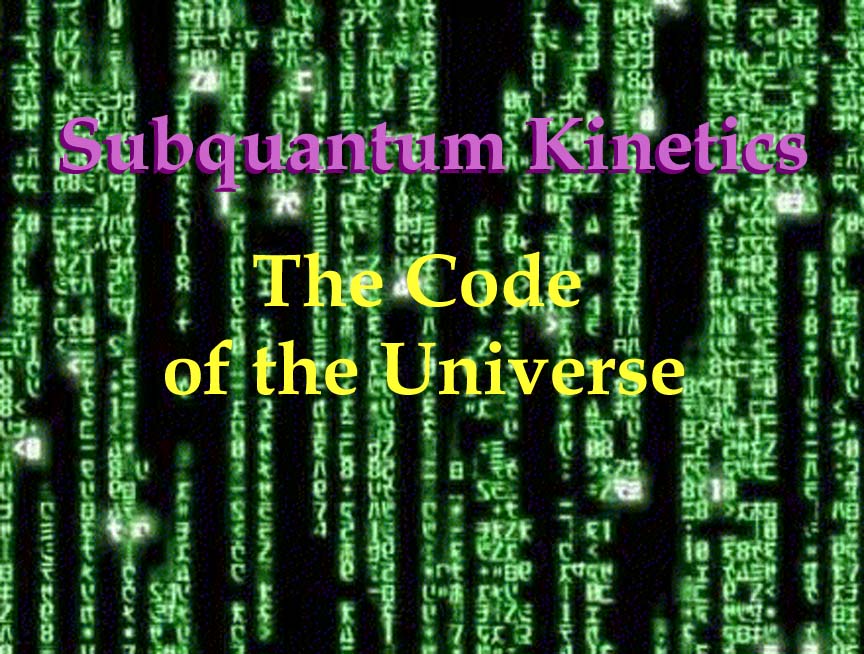Model G is the engine at the heart of Subquantum kinetics. Its five simple kinetic equations form the essence of the subquantum kinetics unified field theory. Subquantum kinetics proposes Model G as the etheric recipe, the “genetic code,” that spawns the physical universe. It proposes that variations in these three ether species compose all physical form. First published in 1985 (LaViolette, 1985), Model G holds the distinction of being the first reaction-diffusion system to be able to generate dissipative solitons, i.e., localized wave patterns having particle like characteristics.
A web browser simulator for the Model G ether reaction-diffusion system has recently been completed by Matt Pulver. It is now posted on the Starburst Foundation website and may be accessed at this link: https://starburstfound.org/model-g-transmuting-ether-simulator/. It simulates the three partial differential equations that describe the evolution in space and time of the variable ether species G, X, and Y. The simulator produces an X potential-well ether fluctuation (equivalent to a positive electric potential impulse) and simulates the outcome. At this site you can experiment with Model G to see how the implanted seed fluctuation forms an etheric subatomic particle. You can alter the reaction system parameters from the preset values and discover how this alters the outcome of the simulation. For example, you can produce particles that ultimately vanish (dematerialize) or alternatively particles that seed other particles adjacent to themselves to spawn a dense nesting of particle cores, forming a dense array of neutron degenerate matter as would be found within a neutron star. The Starburst Foundation website posting gives some discussion about these various outcomes.
The Model G simulator may also be found at the Blue Science website at: https://blue-science.org/sims/reaction_diffusion/. To learn about computer simulation work that has previously been performed on Model G, read the following article from the International Journal of General Systems.

I have been interested in Dr. LaViolette’s theories for several years & have 3 of his books.
This simulator looks interesting but it is very slow on this computer, taking 3 minutes to even begin to display the first little blip in the middle.
I am at a public access computer as I don’t have internet at home.
This computer is a Dell x64 under Win 7 home premium using an AMD processor 2800 Mhz 2 core 2 logical, 4 GB memory.
Is it faster on other computers?
What about a downloadable simulator so I can use it at home?
To use the simulator effectively, it must be run on a computer that operates a relatively recent browser. For example, when I try to run it on my 9 year old ibook G4 that uses Safari version 4.1.3, the posting takes very long to load and the program freezes at the t = 0 when the run button is pushed. But on my 2 year old MacBook Pro that runs system 10.7 and uses Safari version 6.1.2, it runs fine. It takes about 40 seconds to do the complete run. So using an up-to-date browser is key to proper operation of the program.
————-
The version of the simulator presented in this posting is installed on the Starburst Foundation server and run through internet access. Currently, we don’t have a version that can be installed on your computer hard drive. There is a version that runs on a version of Mathematica that Matt Pulver has created. But the Mathematica program is a bit expensive. I would suggest you direct your question on this to Matt Pulver whose email address is given on the cited paper.
Congratulations Dr LaViolette! You have all been hard at work here. Many thanks also to David Jonsson, and Matt Pulver (especially for this model today), and probably many others assisting behind the scenes! The Model G simulator works beautifully and I tried all three experiments. Dissipative solitons…localized wave patterns…now if I could have a direct download and comprehension of the details. I very much appreciate this clear model and the work all have put into making it available to us. I have much to study, but I think I understand the basic concept. Much gratitude to the brilliant minds and work shared here today. So this proposed Model G is how I became physical matter, and to see it presented in my lifetime! Thank you all, and again congratulations on March 1st, 2014, ~Mary